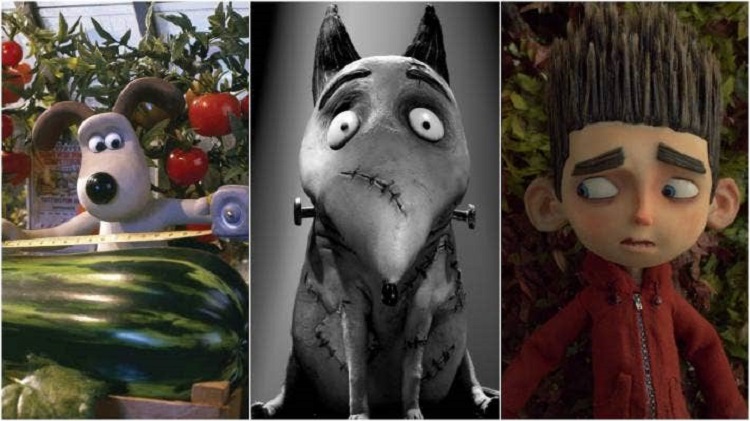The Best Stop motion animations on the Market

Stop-motion animation is a fascinating art form that has captivated audiences for decades. It is a technique that involves creating the illusion of movement by manipulating physical objects one frame at a time. The result is a unique and visually stunning animation style that has been used in everything from feature films to television commercials. In this article, we will explore the world of stop-motion animation, from its origins to its future possibilities. We will delve into the process of creating stop-motion animation, take a look at some famous examples of the genre, and discuss what lies ahead for this exciting medium. So sit back, relax, and let’s dive into the magical world of stop-motion animation!
What is stop motion animation?
Stop-motion animation is a unique form of animation that involves manipulating physical objects to create the illusion of movement. It is a painstaking process that requires a lot of patience and attention to detail, but the result can be truly magical.
In stop-motion animation, each frame is captured individually, with slight adjustments made to the objects in between frames to create movement. This can be done using a variety of materials, such as clay, paper cutouts, or even everyday objects like toys or food. The possibilities are endless when it comes to creating stop-motion animations, and the only limit is your imagination.
One of the most appealing aspects of stop-motion animation is its tactile nature. Unlike other forms of animation that are created entirely on a computer, stop motion animations have a physicality to them that makes them feel more real and tangible. They also have a certain charm and whimsy that can be hard to replicate with other techniques.
Overall, stop-motion animation is an incredibly creative and rewarding art form that has captivated audiences for decades. Whether you’re a seasoned animator or just starting, there’s no denying the magic of bringing inanimate objects to life through this unique medium.
A brief history of stop motion animation
Stop-motion animation has been around for over a century and has evolved significantly since its inception. The first stop-motion animation film was made in 1898 by French filmmaker Georges Méliès, who used puppets to create the illusion of movement. However, it wasn’t until the early 1900s that stop-motion animation became more widely recognized as an art form.
One of the most influential pioneers of stop-motion animation was Willis O’Brien, who created the special effects for the 1925 silent film “The Lost World.” O’Brien went on to use his innovative techniques in his next project, “King Kong,” which is still considered a masterpiece of stop-motion animation today. Over the years, other notable filmmakers such as Ray Harryhausen and Tim Burton have also contributed to the growth and popularity of this unique style of animation.
How is stop-motion animation created?
Stop-motion animation is a unique form of filmmaking that requires a lot of patience and attention to detail. It involves taking individual photographs of an object or character, moving it slightly between each shot, and then playing the images back in sequence to create the illusion of movement. This process can take hours, days, or even months depending on the complexity of the scene.
To create a stop-motion animation, animators typically use puppets or models made out of various materials such as clay, paper, or fabric. They then position these objects on a set and move them incrementally while taking photographs with a camera. Once all the pictures have been taken, they are edited together using software to create a smooth sequence of movements.
One of the challenges of stop-motion animation is ensuring consistency between shots. Animators must pay close attention to details such as lighting, camera angles, and character movements to ensure that everything looks seamless when played back. Despite its labor-intensive nature, stop-motion animation has produced some truly remarkable films that continue to captivate audiences around the world.
Famous stop-motion animated films
One of the most famous stop-motion animated films is “The Nightmare Before Christmas” directed by Tim Burton. This film tells the story of Jack Skellington, the king of Halloween Town, who discovers Christmas Town and decides to take over Christmas. The film’s unique visual style and catchy musical numbers have made it a beloved classic among audiences of all ages.
Another iconic motion animated film is “Wallace & Gromit: The Curse of the Were-Rabbit.” Directed by Nick Park, this film follows the adventures of Wallace, an eccentric inventor, and his loyal dog Gromit as they try to save their town from a giant rabbit that is destroying their vegetable gardens. The film won numerous awards including an Academy Award for Best Animated Feature.
Other notable motion animated films include “Coraline,” “Isle of Dogs,” and “Kubo and the Two Strings.” Each of these films showcases the incredible artistry and attention to detail that goes into creating a stop-motion animated feature. With its unique charm and ability to bring inanimate objects to life, it’s no wonder that stop-motion animation continues to captivate audiences around the world.
The future of stop motion animation
As technology continues to advance, the future of stop-motion animation looks bright. With the use of 3D printing and computer-generated imagery (CGI), animators can create more intricate and detailed sets and characters than ever before. This allows for even more creative possibilities in storytelling.
Additionally, motion animation has seen a resurgence in popularity in recent years with films like “Kubo and the Two Strings” and “Isle of Dogs” receiving critical acclaim. This renewed interest in the art form has led to more opportunities for aspiring animators to showcase their talents.
However, as with any art form, there is always a risk that it may become overshadowed by newer technologies. motion animators need to continue pushing the boundaries of what is possible with their craft to stay relevant and continue captivating audiences. Overall, the future of stop-motion animation looks promising as long as artists continue to innovate and push themselves creatively.
Conclusion
In conclusion, Stop-motion animation is a unique and captivating form of filmmaking that has been around for over a century. From its early beginnings with claymation to modern-day productions using advanced technology, motion animation continues to captivate audiences with its charm and creativity. As we look toward the future, it’s exciting to think about how this art form will continue to evolve and push boundaries. Whether you’re a fan of classic films like “The Nightmare Before Christmas” or newer productions like “Kubo and the Two Strings,” there’s no denying the magic of stop motion animation. So next time you watch a motion film, take a moment to appreciate the incredible amount of work and dedication that goes into creating these masterpieces.






